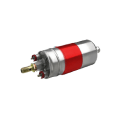Verified Reviews - Mobile Mechanic Near Me
Katherine Grasso
Verified
Fast response, good communication via text, and very friendly and efficient mechanic. My mechanic was Sergio and he was phenomenal. My vehicle wouldn't start or jump start and needed a new battery. The reviews for this business were excellent and as law enforcement, I research things very thoroughly to avoid possible scams. I also compared prices with past battery costs and past dealer costs. Your company is fairly priced and efficient, and I very much appreciate that it is available for cars to be serviced at home or another location. It saved me a tow and a trip to the dealer for what was a straightforward issue to fix. I will definitely use the company again and I also did a Facebook post and tagged y'all 😊
Ashley May Champagne
Verified
I am beyond impressed with this service! My back passenger door was a bit warped and had some nasty scratches after hitting up against a parking garage barrier. Other body shops I contacted told me I'd need a $2,000 door replacement and 5-7 days in the shop - Instant Car Fix offered to help at my place of residence for a fraction of the cost! Jake, Tony and team kept me updated about their progress via text and arrived prepared with all supplies needed. They were very friendly and humble. After about 2 hours, the car looked like nothing had even happened - even more impressive, they did all the work while it remained parked between 2 other cars at my apartment complex! I will definitely consider using their services again- though hopefully not for another accident :) They told me they also do routine maintenance so will keep their card on file!
Queen Leee
Verified
I absolutely loved them they came and took their time on my vehicle.. the mechanic even ran the code on my car twice just so he know it was fixed I didn’t have to worry about anything I bought my own parts and he was ready to work soon as he pulled up.. I felt comfortable( not to mention the comments from others on here was a little scary) but they was very understanding and ready to get the job DONE
Lewis Turley
Verified
Justin is the man! I booked my service window for 2-6 on a Sunday and he was right on time at 2. He knocked the job out in 30 minutes while keeping me informed on what the issues were. Very easy platform to use as well.
Louis Ramos
Verified
My mechanic that took care and repaired my GMC was excellent not only was he great, he also made sure that he did not leave any mess in my garage. He replaced my upper and lower control arms and also my thermostat on my GMC Envoy. Thank instant car fix for sending me a great mechanic.































